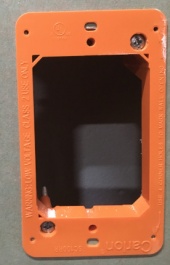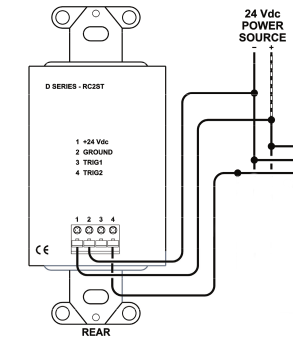Difference between revisions of "Output Channel Selector Kit"
IVSWikiBlue (talk | contribs) |
IVSWikiBlue (talk | contribs) (→Required Parts and Tools) |
||
| Line 3: | Line 3: | ||
*RDL ST-RX2 | *RDL ST-RX2 | ||
*RDL D-RT2ST | *RDL D-RT2ST | ||
| − | *RDL 24 V | + | *RDL 24 V power supply |
| + | *(1) terminal block | ||
* Shielded Stranded 22/2 + ground Wire | * Shielded Stranded 22/2 + ground Wire | ||
* (1) Single Gang mud ring or triple gang if paired with observation audio kit(s) | * (1) Single Gang mud ring or triple gang if paired with observation audio kit(s) | ||
| Line 11: | Line 12: | ||
* Small Screwdriver | * Small Screwdriver | ||
* Face plate screws | * Face plate screws | ||
| + | |||
== Mounting the Button== | == Mounting the Button== | ||
#Using a stud finder, scan the mounting location of the Verifact D ensure the microphone is not mounted on a stud. | #Using a stud finder, scan the mounting location of the Verifact D ensure the microphone is not mounted on a stud. | ||
Revision as of 11:08, 15 February 2021
Contents
Wiring Diagram
Required Parts and Tools
- RDL ST-RX2
- RDL D-RT2ST
- RDL 24 V power supply
- (1) terminal block
- Shielded Stranded 22/2 + ground Wire
- (1) Single Gang mud ring or triple gang if paired with observation audio kit(s)
- Stud finder
- Fish tape or Glow Rods
- Drywall Saw
- Small Screwdriver
- Face plate screws
Mounting the Button
- Using a stud finder, scan the mounting location of the Verifact D ensure the microphone is not mounted on a stud.
- Using a pencil, mark out where the switching button will be located
- Cut a hole into the drywall, large enough to fit the mud ring into it securely.
- Cut a hole above the drop ceiling to fish lines (if necessary)
- Using fish tape or glow rods, fish 3 lines of 22/2, two for signal control and one for power. (shown below)

